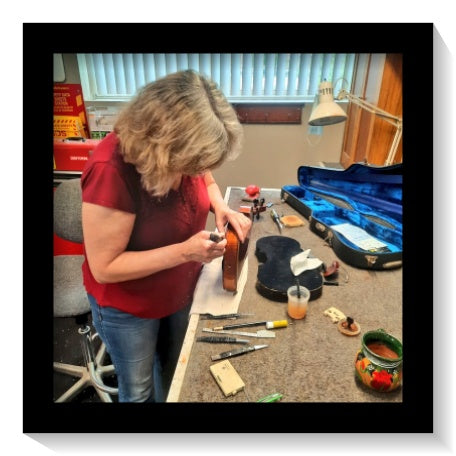
- Article published at:
- Article author: cassandra thuneman
- Article comments count: 0
Drawer menu
This next section covers the five categories that are important to the buyer of an instrument.
Our first category important to the buyer is:

Customers need to set a reasonable price limit when they purchase an instrument. Understand that string instruments range in price and quality from a few hundred dollars to many thousands of dollars. Before you select a range, it's a good idea to play examples in various price ranges, so that you can get a feel for the differences. When it's time to call and make an appointment to see instruments ask if the violin shop can reserve ½ hour to one hour, with the first 10 to 15 minutes set aside to explain the selection process. When you are on the phone tell them you have a price range, that way your shop can get several in that range ready for you to consider. If you don't want to spend more than a certain dollar amount, make sure they understand and respect your request. To either educate your ear or satisfy your curiosity, you may want to hear instruments in the next range up or down. Not every violin in one price range is made equally. Likewise, not every violin at one quality level is priced equally. Determine what your purpose is in ownership. You should consider whether you want to invest in a more expensive violin that will last you a lifetime, or you simply want to buy a cheaper model that will get you through your lessons. Your plans for an instrument will dictate what price range you should be investigating.
Make sure to bring your bow, shoulder rest for violins and violas, and a few measures of music to play Having your bow takes out a foreign element in your right hand leaving only the left to focus on.
The following is a general guideline for the basic price groups. Add 10% to 20% more for violas and 50% more for cellos
$400.00-$600.00 – Usually beginner instruments. Lower-end factory or trade name instruments from China, Czech, Romania, and Bulgaria.
$800.00-$2000.00 – Entry level step-ups. Better-made factories from China, Romania, Bulgaria, and Germany.
$2100.00-$8000.00 – Includes above but with better wood and craftsmanship. Usually better attention to detail and sound.
$9000.00-$15,000.00 – Handmade violins. Contemporary American makers and European makers.
$25,000.00-$75,000.00 –Prize-winning contemporary makers; well-known 20 century English and French makers
Approval:
Any instrument that you are seriously considering should be able to be taken out on approval. This allows you to play it in a variety of settings, and receive critical feedback from friends, teachers, and colleagues. Does the shop have a "trial policy" ?– Whatever factors are important to your decision-making, make sure it will fit into their "trial period". For example: Will your teacher be in town to give you feedback? Can you get into a hall if the projection of sound is important?
Financing:

Does your shop have any financing, or can they refer you to a bank that understands violin purchases? By the time you have made your decision, you need to be ready to tell them how you wish to pay for the instrument. If you wait until you fall in love with one, you might be left trying to beg, borrow, or having to negotiate the purchase price, and considerable heartache will ensue if your plans do not materialize.
Trade-in Policy:
Does your shop have a trade-in policy? If in the future you need a better quality instrument or a larger size, what value will the present purchase carry forward? Also, find out about the selection your shop has available in the range or size that might be the next step up if the trade-in is important to you.